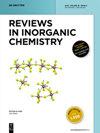二维纳米材料:六方氮化硼、石墨烯和量子点的海水淡化和能耗应用
IF 3.1
3区 化学
Q1 CHEMISTRY, INORGANIC & NUCLEAR
引用次数: 0
摘要
在本文中,我们探讨了纳米技术在通过海水淡化解决水资源短缺问题方面的作用。文章讨论了纳米技术在水处理中的应用范围,强调了六方氮化硼(h-BN)、石墨烯和量子点等二维纳米材料在彻底改变海水淡化技术方面的潜力。在纳米材料应用的背景下分析了各种海水淡化技术,包括膜蒸馏(MD)、太阳能多级闪蒸(MSF)和多效蒸馏(MED)。综述强调了传统水处理方法的能源密集性质,并强调了纳米材料在提高海水淡化过程的效率和可持续性方面的潜力。报告承认海水淡化所面临的挑战,如可扩展性和环境影响,为未来的研究方向奠定了基础。本文章由计算机程序翻译,如有差异,请以英文原文为准。
Water desalination, and energy consumption applications of 2D nano materials: hexagonal boron nitride, graphenes, and quantum dots
In this article, we explore the role of nanotechnology in addressing water scarcity through water desalination. The scope of nanotechnology in water treatment is discussed, emphasizing the potential of 2D nanomaterials such as hexagonal boron nitride (h-BN), graphene, and quantum dots in revolutionizing desalination technologies. Various water desalination techniques, including membrane distillation (MD), solar-powered multi-stage flash distillation (MSF), and multi-effect distillation (MED), are analyzed in the context of nanomaterial applications. The review highlights the energy-intensive nature of conventional water treatment methods and underscores nanomaterials’ potential to enhance efficiency and sustainability in water desalination processes. Challenges facing desalination, such as scalability and environmental impact, are acknowledged, setting the stage for future research directions.
求助全文
通过发布文献求助,成功后即可免费获取论文全文。
去求助
来源期刊

Reviews in Inorganic Chemistry
化学-分析化学
CiteScore
7.30
自引率
4.90%
发文量
20
审稿时长
1 months
期刊介绍:
Reviews in Inorganic Chemistry (REVIC) is a quarterly, peer-reviewed journal that focuses on developments in inorganic chemistry. Technical reviews offer detailed synthesis protocols, reviews of methodology and descriptions of apparatus. Topics are treated from a synthetic, theoretical, or analytical perspective. The editors and the publisher are committed to high quality standards and rapid handling of the review and publication process. The journal publishes all aspects of solid-state, molecular and surface chemistry. Topics may be treated from a synthetic, theoretical, or analytical perspective. The editors and the publisher are commited to high quality standards and rapid handling of the review and publication process.
Topics:
-Main group chemistry-
Transition metal chemistry-
Coordination chemistry-
Organometallic chemistry-
Catalysis-
Bioinorganic chemistry-
Supramolecular chemistry-
Ionic liquids
 求助内容:
求助内容: 应助结果提醒方式:
应助结果提醒方式:


